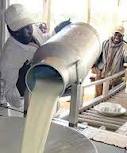How to stabilize milk prices in Kenya
As Kenya hosts the largest stakeholders in the African dairy industry, may be its time to reflect on the status of the dairy industry in Kenya and how to improve the sector. Consumers are currently purchasing milk at very high prices but farmers continue to receive very low prices at the farm gate.
Brands from the major milk processors, New KCC and Brookside, sell on average at Kshs 45 per half a litre around Nairobi and the prices go as high as Kshs.75 per half litre in other areas. This translates to Kshs 90 to Kshs 150 per litre. But the processors buy the milk from farmers at Kshs 28 per litre where only Kshs 24 reach the farmers after deductions.
 The current cost of milk production is Kshs 24 per litre meaning that the farmer is not making any profit. This has forced some milk cooperatives to boycott selling their milk to the processors and instead opting to sell directly to consumers at Kshs 45 per litre. The processors have responded with New KCC announcing an increase in the price of milk to between Kshs 30 to Kshs 35 per litre in an attempt to woo them back. Whether farmers will respond to this changes remains to be seen.
The current cost of milk production is Kshs 24 per litre meaning that the farmer is not making any profit. This has forced some milk cooperatives to boycott selling their milk to the processors and instead opting to sell directly to consumers at Kshs 45 per litre. The processors have responded with New KCC announcing an increase in the price of milk to between Kshs 30 to Kshs 35 per litre in an attempt to woo them back. Whether farmers will respond to this changes remains to be seen.
But of great concern is that the industry has not ensured consistent supply of milk throughout the year. Although technologies to ensure continued milk supply is simple and available, most farmers have not embraced it, and instead relying on rain fed forage leaving them at the mercy of the weather. The shortage of milk caused by annual dry spells can be countered by simple technologies of harvesting, preserving and storing enough cattle feed during times of plenty.
However, with the good rains that are annually received throughout the country during the long rainy season, farmers will soon be pouring their milk due to a glut in the market. Milk processors have no mechanisms to ensure this wastage that is witnessed every year does not recur. Although the milk processors and government extension educate farmers on fodder establishment, preservation and utilization, this information reach only a few selected farmers. The majority of farmers have no idea what to do during periods of excess or scarce pasture and milk supply will always fluctuate depending on seasonal availability of green material for cattle feed.
The ongoing dairy stakeholder conference is welcome and as it discusses the application of technology in creating solutions to the challenges facing the dairy sector, it should take note of the following:
The dairy policy environment.
Policy makers should recognize milk as a key component of food security so that dairy farmers can get the attention they deserve. Dairy farmers have often had a raw deal from government since the advent of the structural adjustment programs.
Government extension.
Although the government pledges commitment to equipping farmers with the necessary dairy skills, the same is not reflected in funding to the ministry in charge of livestock development. Over the past 15 years or so the annual budget at the district level has been dismally low and has never improved. With a budget of Kshs 50,000 every three months for running a district, nothing can really be achieved in terms of boosting technology transfer and trade within the continent and abroad.
The number of extension staff in the dairy sector is also a matter of concern. They are too thinly spread in the field, even when the private sector are taken into account. The terminated 700 extension workers employed on contract basis under the economic stimulus program has not made things any easier.
The collapse of extension services has denied farmers access to information and technology and poses a serious challenge to the dairy industry. The effect is that farmers are left on their own.
Dairy infrastructure.
The massive road infrastructural development currently going on is welcome but rural roads in milk producing areas are still in pathetic state. The capacity to absorb excess milk is quite low with annual processing capacity at slightly over 550 million kg compared to annual cow milk production of 4.6 million tonnes. The government in partnership with the private sector needs to invest in milk cooling, storage and processing facilities as a matter of urgency.



